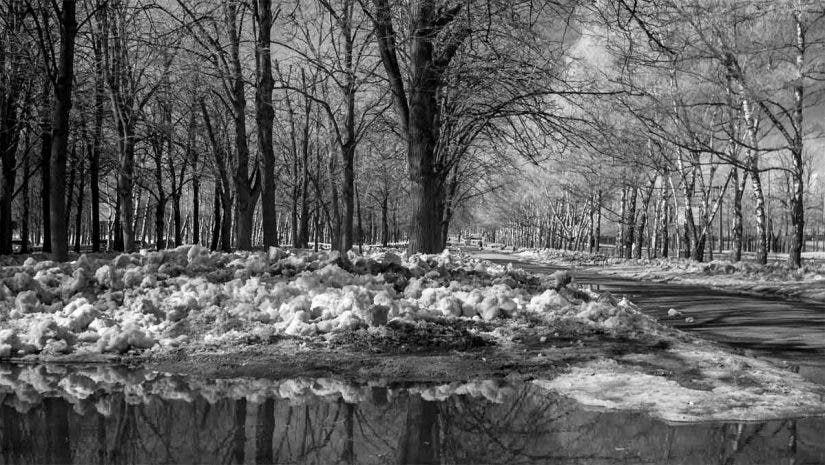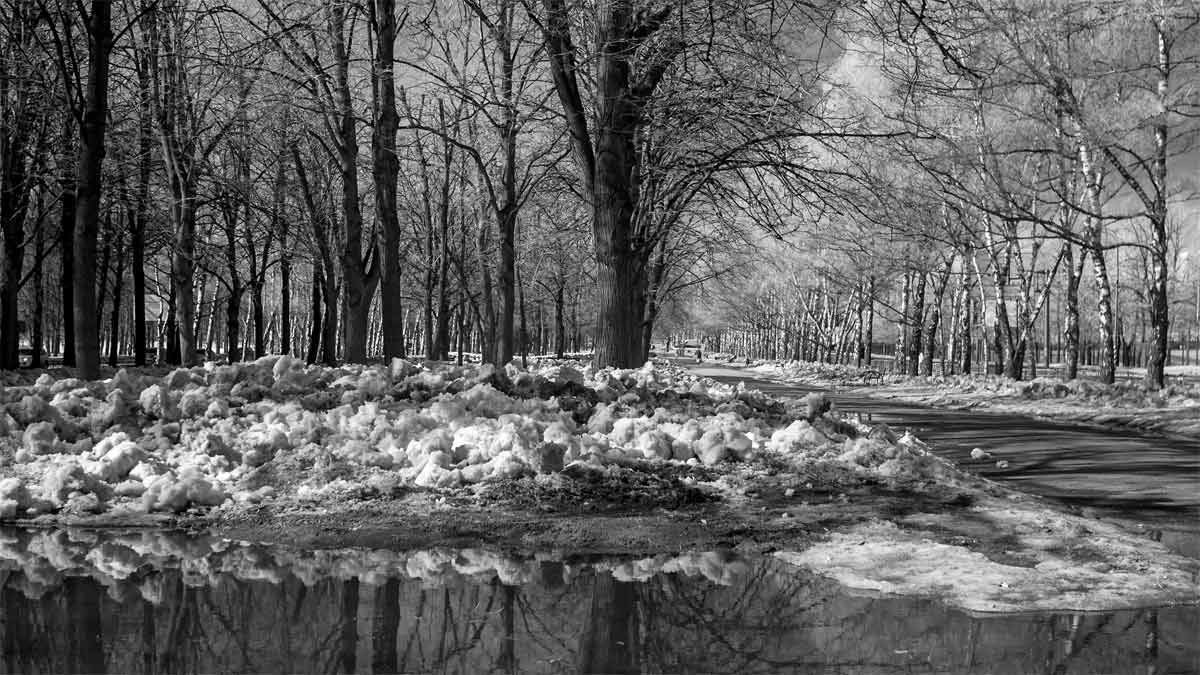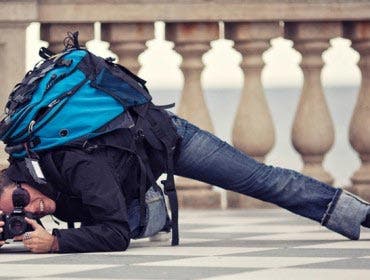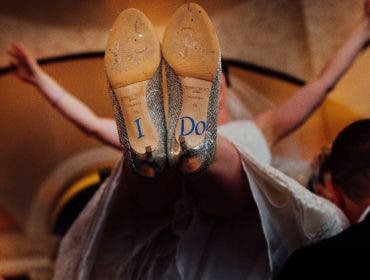Because the imaging sensors in digital camera are sensitive to more than visible light, some manufacturers place an infrared cut-off filter in front of the chip to block IR light from striking it and causing color balance problems.
| If your digital camera is not IR sensitive or if you decide to get really serious about digital infrared photography you might want to have your camera converted to IR-only operation by having this filter removed and replaced with one that only passes infrared light.
After conversion, the camera only records reflected IR radiation but there is no need to place an IR filter in front of the lens, leaving the viewfinder clear and bright so the camera to be handheld–something IR film photographers only dream about.
You can tone black and white IR image files to add a different look. This photograph in Arches National Park was made with a modified Canon EOS D30 and toning was applied using PixelGenius PhotoKit Photoshop-compatible plug-in. ©2006 Joe Farace Sources for converting standard digital SLRs to IR The IR Guy The cost to convert a camera ranges from $350 to $450, depending on camera and conversion service. If you want to do it yourself, LifePixel’s website includes tutorials that show you how to modify certain cameras. Joe Farace, co-founder of the League of Infrared Photographers, is the author of “The Complete Guide to Digital Infrared Photography” published by Lark Books (ISBN 1579907725.) It’s available in all the best bookstores as well as Amazon.com. Do you own a digital camera that you’ve converted to infrared? Which one? Who did you use for the switch-over? Leave a comment! |






